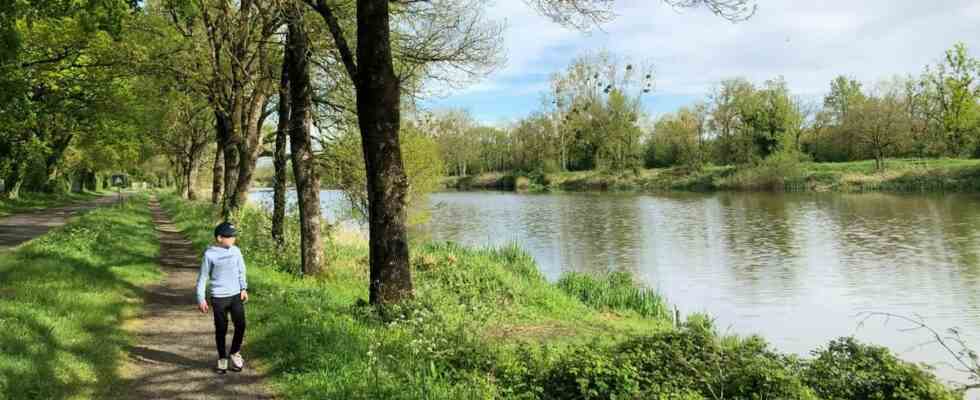It is a canal with a turbulent history. Inaugurated in 1892, the Basse-Loire maritime canal, also called the Martinière canal, is 130 years old this year. It is said of him that he “saved the port of Nantes” in only twenty years of activity. It also links the Loire over 15 kilometers in length to… The Loire, from Frossay to Le Pellerin, to the west of Nantes. An intriguing water passage that, more than a decade later, still plays an indispensable role.
Its construction was ordered in 1882 when “sandbanks present in this part of the Loire made it impossible for large boats to navigate to Nantes”, says a volunteer from the cultural association of the Martinière canal (Accam) . The water level was therefore insufficient and forced the large skippers to unload their goods at Paimboeuf, towards the Loire Estuary. This was then brought to Nantes by oar or sail. As a result, Paimboeuf grew rich while the port of Nantes received no dividend on trade.
“Sink the ports of Paimboeuf and Saint-Nazaire”
To remedy this, the Chamber of Commerce, the port of Nantes and the municipality have decided to build a deeper canal parallel to the Loire, to circulate large shipping. “The objective was to sink the ports of Paimboeuf and Saint-Nazaire, but history has proven the opposite,” laughs this volunteer. Another function of the canal still necessary today: the water regulation of the lake of Grand-Lieu and the Marais Breton. It will have taken ten years of “pharaonic” work before opening this new passage to navigation. The workers, who had already worked on the Suez Canal, were slowed down by periods of high tides and rain. During the twenty years that followed its inauguration, the canal recorded more than 10,000 boat passages, including 35 of the famous belemthe last large 19th century French merchant ship still sailing.
But, from the First World War, finished the passages of the great navigation on the channel. “Technological developments have made it possible to dig in the Loire to allow ships to circulate easily”, explains Accam. Only twenty years after its construction, the canal lost its commercial navigation function. It continues all the same to circulate within it the “small inland waterways”. It also becomes the “cemetery of old Nantes boats”. The tall ships “lined up in the canal to then be demolished, repaired or sold”, assures the Pellerinais volunteer.
“Still traces of its history”
During the Second World War, new developments in the life of the canal. The Germans seized it before it became an American base for NATO, from 1957 to 1967. “Today, we still have traces of its history,” underlines the volunteer from Accam. Three barges, flat-bottomed boats, and two concrete barges are abandoned between Frossay and Le Pellerin. The association, historians of Pellerin and the town hall of the town would like to “take one of the barges out of the water to keep it and open a concrete barge to the public”.

The place is a preserved natural site where walkers and cyclists meet there regularly. A nautical base offers the opportunity to try rowing, pedal boating or canoeing. At the end of the canal, on the east side, it is also possible to admire the work of the “soft boat” or “Misconceivable” by Erwin Wurm, as part of the trip to Nantes. On site, two “machineries”, one towards the Pellerin, at the entrance to the canal, the other at the Champs-Neufs lock are open to the public in summer and during heritage days. They allow walkers to “discover the boilers, the chimney, the operation of the steam engines and the water pumps of the canal”, explains Accam.
The association, created in 1987, brings together several fans of “heritage, mechanics and navigation”. The latter have “restored the machines, made models and installed explanatory panels of history all along the path along the water”, specifies the volunteer.

